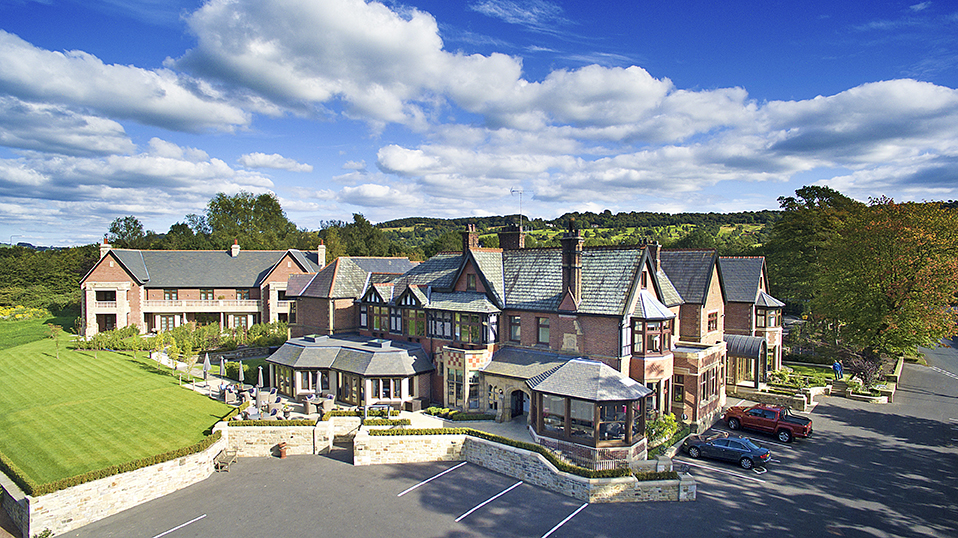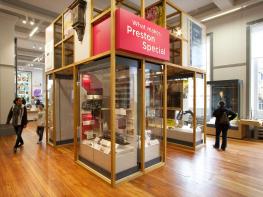Shaw Hill prides itself on ensuring its customers have a great experience. Whether you choose to…
Darwen Tower and the freedom of the moors

A simple walk, if moderately steep in parts, to a great physical and historical landmark on the moors.
3.75 miles (6kms)
About the walk
The Millennium saw the enactment of the Countryside and Rights of Way Act in England and Wales and, although way short of Scotland's statutory right of access, it opened almost 2.5 million acres (over a million hectares) of open countryside to walkers. However, that 'right to roam' has been enjoyed on the Darwen Moors for more than a century, and Darwen Tower stands in commemoration. After a long struggle, spearheaded by the Ashton family, rights of access over the moors were transferred to Darwen Corporation in 1896. A large procession of local people climbed on to the moor in celebration. It is worth remembering that in this, as in most other cases, what was really happening was the re-establishment of rights of access that had existed for centuries. Local people would cross the moors on their way to work in the mills and in the small collieries that existed here. The erosion of these rights in favour of 'sporting' interests caused much resentment and was not forgotten. Free access to these moors today is a right, but should also be considered both a privilege and a responsibility.
Pleasant stages
The opening stages of the walk are a pleasant preamble, through the shady woods around Upper Roddlesworth Reservoir and over a shoulder by some old tracks to Earnsdale Reservoir. Here you are just above Sunnyhurst Wood, Darwen's main park, which provides a direct link from the town on to the wilderness of the moors. Above the reservoirs you climb in stages. After the old quarry you begin the final, longest stage, on a corner of the moors overlooking the town.
India Mill and Darwen Tower
The dominant features, without question, are the India Mill and Darwen Tower. The India Mill dates from the 1860s; the chimney is 302ft (92m) high and its style is not Indian but Italianate, although Gandhi did visit the town in 1931. The mill closed 60 years later and now houses new light industry and office space, with a range of retail and leisure developments in the subsidiary buildings.
Construction began on the Darwen Tower in 1897, the year after the achievement of access, which also happened to be the Diamond Jubilee of Queen Victoria. The building was opened in 1898 and has 65 wide stone steps, and then 17 iron ones leading to the upper platform. By the middle of the 20th century, the tower had become derelict and a restoration appeal was launched, with the work completed in 1971. The cupola was replaced by a local benefactor in 2011, following its predecessor's destruction in a gale the previous winter.
Naturally the view is extensive, especially in the northern half. Some of it has changed totally since the tower was built; the new industrial areas alongside the M65 above Blackburn are the most obvious example. But the skylines of Bowland and Pendle are the same. The descent takes you past some old mine workings and a waterworks channel. Just before the end, the row of houses (Hollinshead Terrace) was built as workers' accommodation for a nearby mill that no longer exists.
Walk directions
Leaving the car park, walk left and cross to a bridleway that leaves opposite the bus turning circle. Almost immediately go right following the 'Woods and Water' trail. Drop through the trees to a crossing path and turn right through a dip. Branch right at a fork and climb away, catching glimpses of the Upper Roddlesworth Reservoir through the trees. Higher up, the trail curves right to ascend more steeply near the edge of the wood. Exit the top corner back onto the road and go left 200yds (183m) to Fine Peters Farm.
Turn off up a track beside it, which rises over the shoulder of Green Hill. Beyond the crest, keep ahead at a junction, dropping steeply down a sett-paved path. At the bottom go right across the Earnsdale Reservoir dam. Swing left and right with the track and climb to the next left bend. There, pass through a gate on the corner and follow a path more steeply up between young trees to another track.
Walk left, shortly passing the Water House. Turn off right through a gate up a concrete track. As the track later bends right, leave through a gap in the safety barrier and follow a path across the hillside to emerge through a gate onto a crossing track by an old quarry. Go right, ignoring the path off left to pass through a gate onto Darwen Moor. Keep left at a fork and climb steeply away, the increasing height opening views to Darwen and the India Mill. In time the path turns from the wall towards the tower.
From the tower, drop to the nearby trig point and bear left to a lower path. Follow it left across the hillside above Sunnyhurst Hey Reservoir. Keep going as a path joins from below, the way shortly bending left around the end of the hill. Ignore the first path leaving right through a gap and continue to a marker stone, where a second path leaves through a broken fence. Descend across the moor to a junction by another marker. Go right, now losing height more steeply. Approaching the bottom, carry on past a final marker and through a gap to find a stepped path falling to a broad track.
Follow it left and then right across the deep clough of Stepback Brook to continue through a small wood. Beyond, go through the rightmost of two gates and carry on across rough grazing. The track finally ends behind terraced cottages. Walk out to the main road to find the car park just to the right.
Additional information
Well-defined tracks throughout, 1 stile
Reservoir and wooded surroundings, farmland, open moors
Dogs can run free on tracks, watch for sheep on moor
OS Explorer 287 West Pennine Moors
Car park near Royal Arms
At car park
WALKING IN SAFETY
Read our tips to look after yourself and the environment when following this walk.
Find out more
Also in the area
About the area
Discover Lancashire
Lancashire was at the centre of the British cotton industry in the 19th century, which lead to the urbanization of great tracts of the area. The cotton boom came and went, but the industrial profile remains. Lancashire’s resorts, Blackpool, Southport and Morecambe Bay, were originally developed to meet the leisure needs of the cotton mill town workers. Blackpool is the biggest and brashest, celebrated for it tower, miles of promenade, and the coloured light ‘illuminations’. Amusements are taken very seriously here, day and night, and visitors can be entertained in a thousand different ways.
The former county town, Lancaster, boasts one of the younger English universities, dating from 1964. Other towns built up to accommodate the mill-workers with back-to-back terraced houses, are Burnley, Blackburn, Rochdale and Accrington. To get out of town, you can head for the Pennines, the ‘backbone of England’, a series of hills stretching from the Peak District National Park to the Scottish borders. To the north of the country is the Forest of Bowland, which despite its name is fairly open country, high up, with great views.
Nearby stays
Restaurants and Pubs
Nearby experiences
Recommended things to do
Why choose Rated Trips?
Your trusted guide to rated places across the UK
The best coverage
Discover more than 15,000 professionally rated places to stay, eat and visit from across the UK and Ireland.
Quality assured
Choose a place to stay safe in the knowledge that it has been expertly assessed by trained assessors.
Plan your next trip
Search by location or the type of place you're visiting to find your next ideal holiday experience.
Travel inspiration
Read our articles, city guides and recommended things to do for inspiration. We're here to help you explore the UK.













